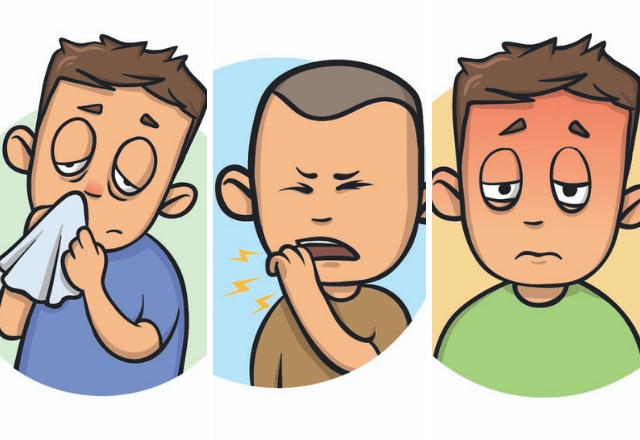H3N2 Influenza: Silent Invasion Of The New Enemy.
The world was just fighting with the drastic effect of the pandemic and layoffs, and now arrived anothe concern in the form of H3N2 influenza.

India has recorded its first two fatalities from seasonal influenza subtype H3N2, one each from Haryana and Karnataka, with the Union Health Ministry stating it is keeping a careful eye on the situation and that instances are likely to fall by the end of March. There have been about 90 H3N2 virus detections across the country. The Government is also keeping a careful eye on morbidity and death linked to the H3N2 subtype of seasonal influenza.
In the context of seasonal influenza, young children and the elderly with comorbidities are the most susceptible groups. So far, Karnataka and Haryana have verified one H3N2 influenza mortality apiece, the government said.
In recent months, the number of flu cases in the nation has skyrocketed. The H3N2 virus sometimes referred to as the “Hong Kong flu,” is mostly to blame for the infections. More folks in the country are admitted as a consequence of this virus than any other type of flu.
What is seasonal influenza?
Seasonal influenza is defined as an acute respiratory infection brought on by globally circulating influenza viruses, with cases rising during particular months.
India experiences two seasonal influenza peaks each year, calculated as one over January to March and the other during the monsoon season. Seasonal influenza cases are predicted to fall beginning in March. As a result, state surveillance officers are well prepared to handle this public health issue, the ministry stated in a statement.
According to the ministry, instances are monitored and tracked in real-time across states via the Integrated Disease Surveillance Programme (IDSP) network.
The people who are either fighting or lost the battle from H3N2 influenza.
A health department official in Haryana stated that a 56-year-old man from the state, a lung cancer patient who died lately, tested positive for the H3N2 virus in January. According to early information, the patient, a 56-year-old guy from Jind district, died on February 23 at the home of lung cancer. He tested positive for the H3N2 virus in January at the PGIMS hospital in Rohtak, according to the official.
According to a state health department official, Hire Gowda, 82, died on March 1 from the H3N2 influenza. It is established that Hire Gowda, son of Halage Gowda, 82, died of the H3N2 virus on March 1, said the Hassan District Health Officer (DHO). The official said that Gowda had high blood pressure and diabetes. The patient was hospitalized to the hospital on February 24 and lost the battle on the first day of March. When the sample was considered for testing, the observation revealed after five days mentioned that he was infected with the virus, according to the District Health Officer.

On January 17, the patient tested positive for the Influenza A subtype H3N2 virus, according to the official.
Some statistical shreds of evidence.
According to the most recent statistics available on the IDSP-IHIP (Integrated Health Information Platform), states reported 3,038 laboratory-confirmed cases of various subtypes of influenza, including H3N2, until March 9.
According to the government, there was the following monthly breakup.
- 1,245 instances in January.
- 1,307 cases in February.
- 486 cases as of March 9.
Furthermore, according to IDSP-IHIP statistics from health institutions, the following are the cases of acute respiratory illness or influenza-like illness (ARI/ILI).
- 3,97,814 instances in January.
- Rising marginally to 4,36,523 in February.
- This figure stands at 1,33,412 instances in the first nine days of March.
Cases of severe acute respiratory illness (SARI).
- In January, there were 7,041 hospitalized cases.
- 6,919 in February.
- 1,866 till 9th March.
This year, 955 H1N1 cases have been documented as of February 28. The majority of H1N1 infections were recorded in the following states.
- Tamil Nadu has 545.
- Maharashtra had 170.
- Gujarat had 74.
- Kerala had 42.
- Punjab had 28.
The Integrated Disease Surveillance Programme and the National Centre for Disease Control, according to the ministry, conduct near real-time surveillance of instances of ILI and SARI reported from health facility OPDs and IPDs.
Symptoms.
- Persistent cough.
- Fever.
- Chills.
- Shortness of breath.
- Wheezing.

Individuals have also complained of the following symptoms. These symptoms might last up to 7 days.
- Nausea.
- Sore throat.
- Body aches.
- Diarrhea.
Scientists claim that the virus is extremely contagious and that it may be communicated by coughing, sneezing, and direct contact with an infected person.
Covid-like precautions, such as hand washing and mask use, have been advised by various health professionals.
The Indian Council of Medical Research (ICMR) recommends the following for protection.
- Shielding one’s mouth and nose while sneezing or coughing.
- Drinking enough fluids.
- Not touching one’s eyes or nose.
- Taking paracetamol for fever and body soreness.
The last line.
The world was just fighting with the drastic effect of the pandemic and mass layoffs, and now arrived another point of concern. Only H3N2 and H1N1 infections have been found in India thus far. Both displayed Covid symptoms, which caused millions of infections and 6.8 million deaths globally. Two years after the pandemic started, rising flu cases have caused concern among the general population. Let’s see what is written in the remaining chapters of 2023.
edited and proofread by nikita sharma




